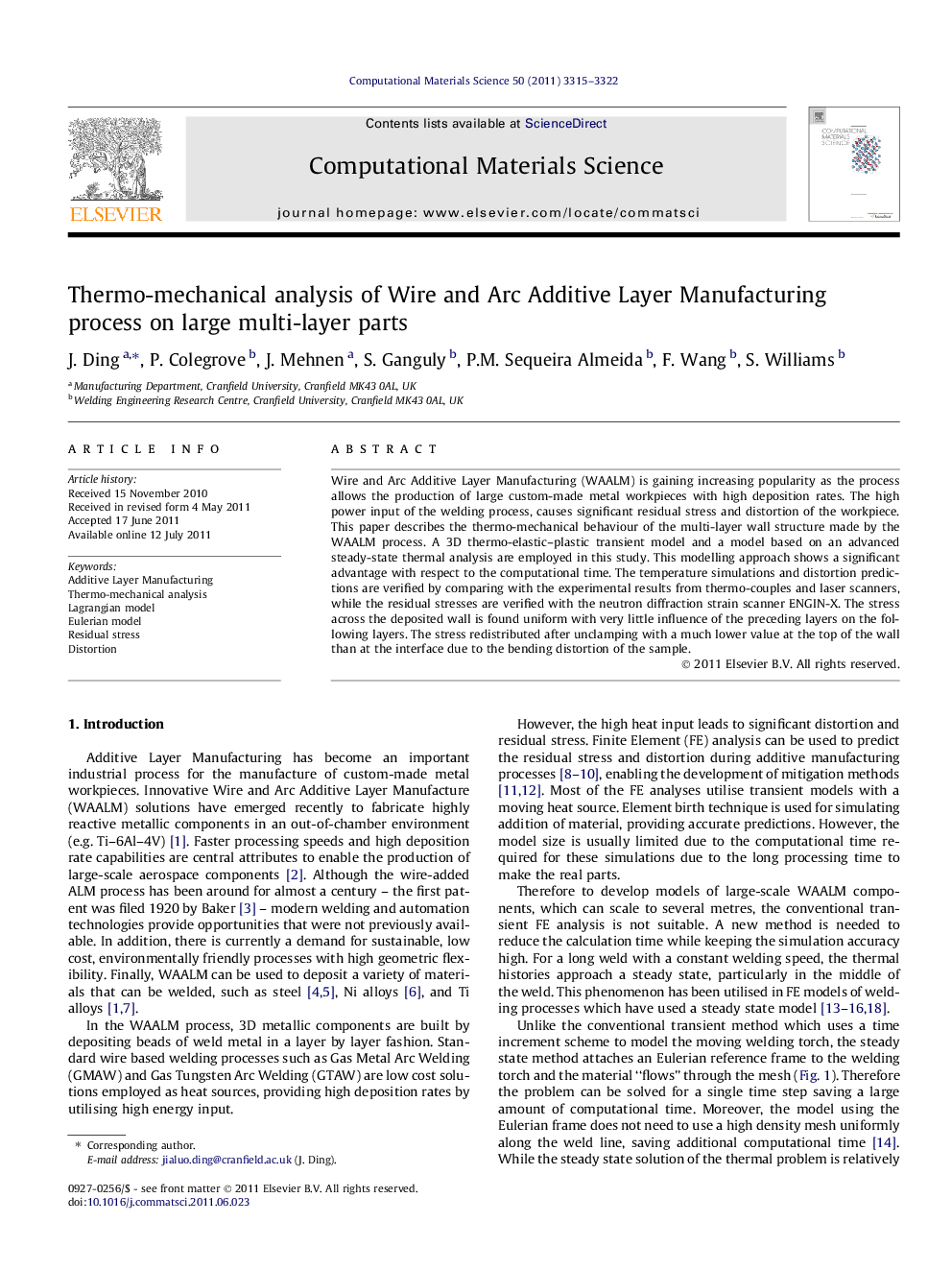| Article ID | Journal | Published Year | Pages | File Type |
|---|---|---|---|---|
| 1562016 | Computational Materials Science | 2011 | 8 Pages |
Wire and Arc Additive Layer Manufacturing (WAALM) is gaining increasing popularity as the process allows the production of large custom-made metal workpieces with high deposition rates. The high power input of the welding process, causes significant residual stress and distortion of the workpiece. This paper describes the thermo-mechanical behaviour of the multi-layer wall structure made by the WAALM process. A 3D thermo-elastic–plastic transient model and a model based on an advanced steady-state thermal analysis are employed in this study. This modelling approach shows a significant advantage with respect to the computational time. The temperature simulations and distortion predictions are verified by comparing with the experimental results from thermo-couples and laser scanners, while the residual stresses are verified with the neutron diffraction strain scanner ENGIN-X. The stress across the deposited wall is found uniform with very little influence of the preceding layers on the following layers. The stress redistributed after unclamping with a much lower value at the top of the wall than at the interface due to the bending distortion of the sample.
► A thermo-mechanical performance study for Wire and Arc Additive Layer Manufacture. ► Comparison of transient and advanced steady-state FEM models for multi-layer parts. ► The 3D models can correctly predict temperature, residual stress distributions. ► Real-world experiments support the predicted complex inter-layer mechanisms. ► The novel steady-state FEM thermal model can save up to 80% computational time.
